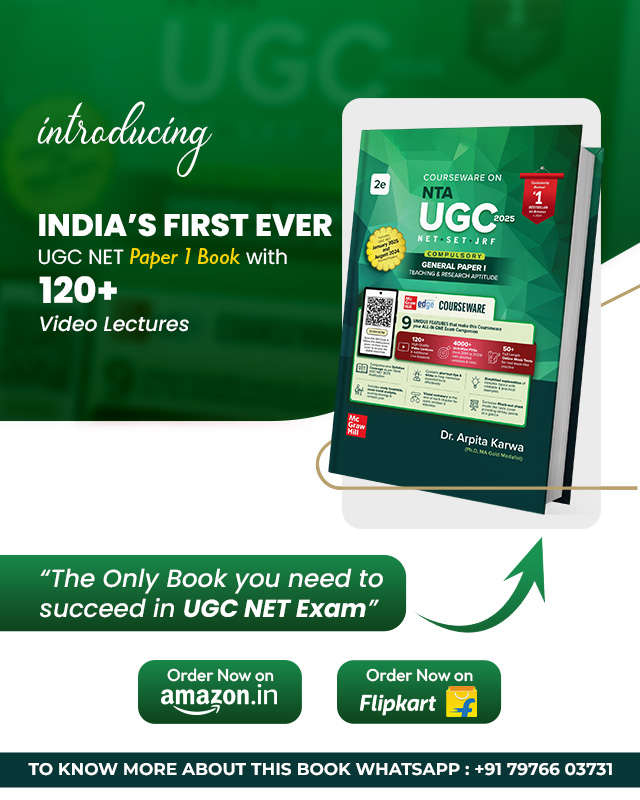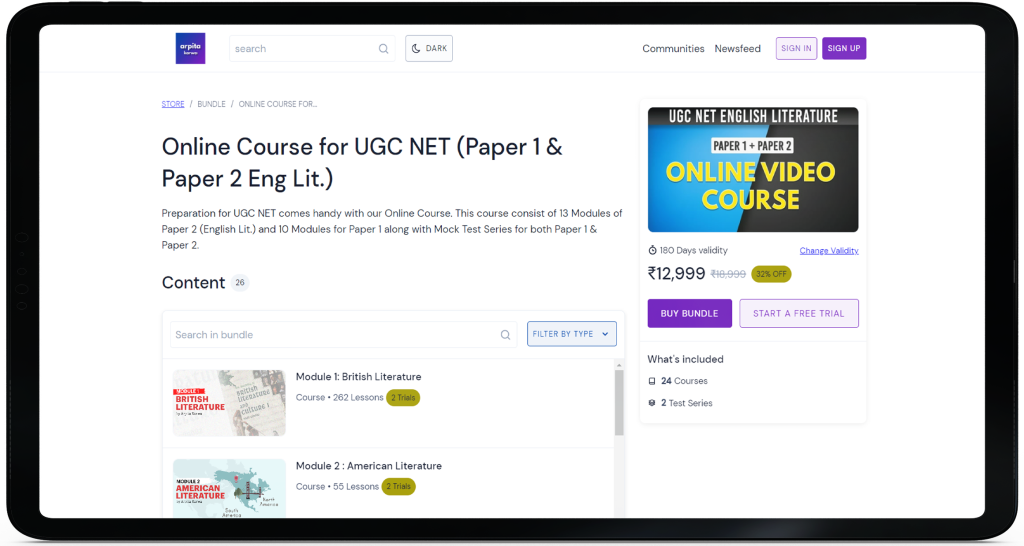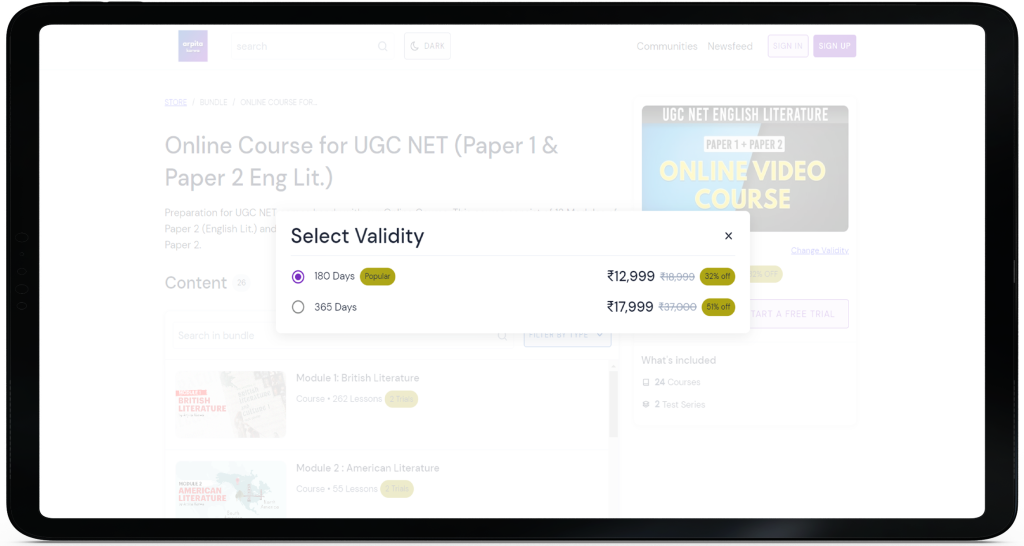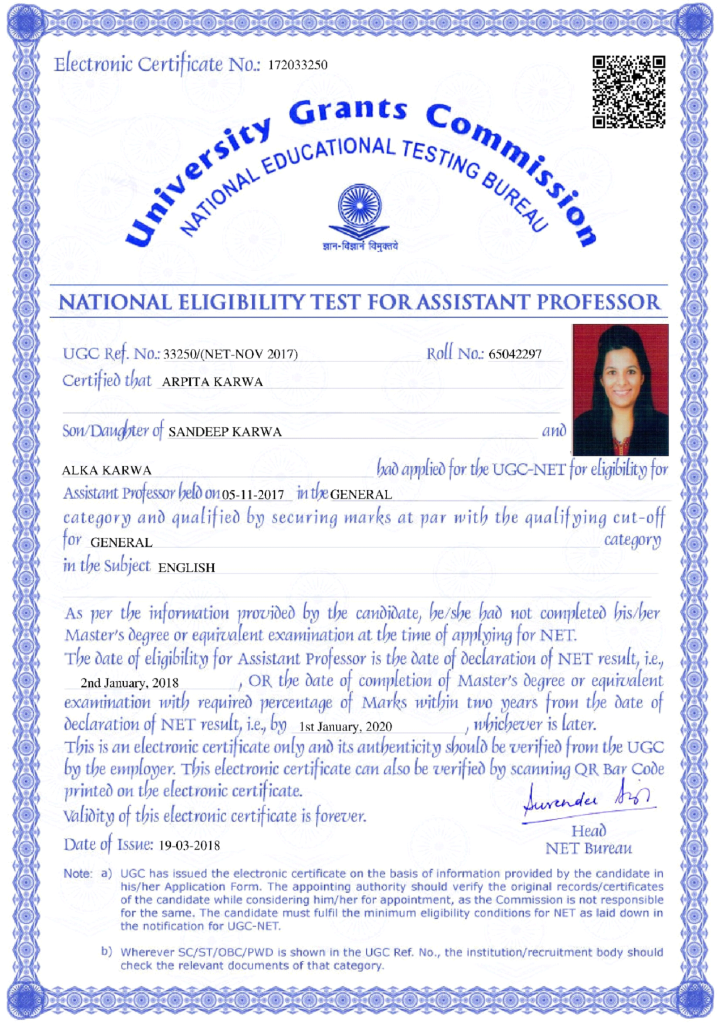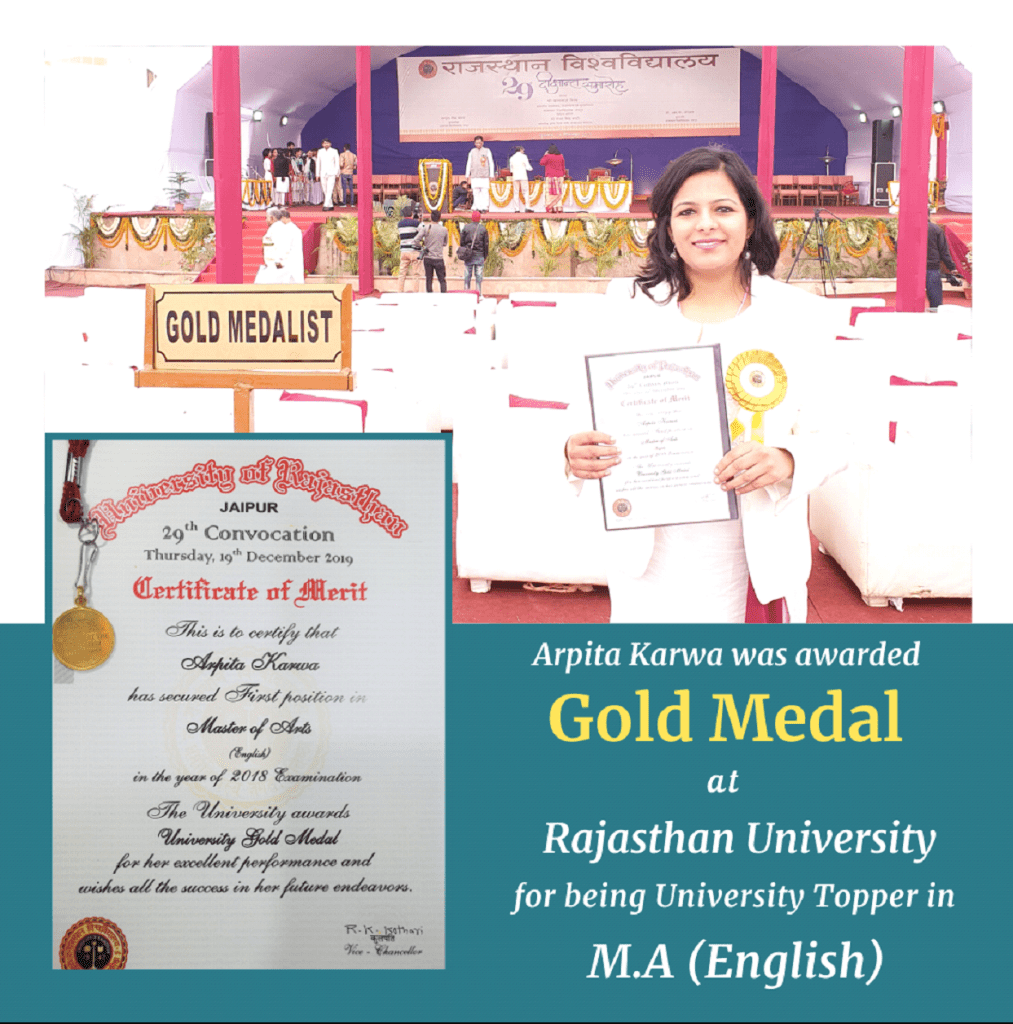Gujarat Set 2
June 20, 2023 2023-12-18 15:52Gujarat Set 2
Gujarat Set 2
Q.1) In which of the Shakespearean comedies, the song “Sigh no more ladies” occurs?
(A) As You Like it
(B) Much Ado About Nothing
(C) Measure for Measure
(D) Twelfth Night
Q.2) The Pilgrims in Chaucer’s Prologue to the Canterbury Tales go the pilgrimage to the tomb of
(A) St. Thomas A. Beckett
(C) St. John
(B) St. Paul
(D) St. Nicholas
Q.3) Spenser’s The Shepherd’s Calendar is called a calendar because:
(A) It is an astrological Magazine
(B) It was started by the union of the shepherds
(C) It is a series of pastoral eclogues for every month of the year
(D) None of the above
Q.4) The good Angel and evil Angel appear in:
(A) The Spanish Tragedy
(B) Dr. Faustus
(C) Volpone
(D) Tamburlaine
Q.5) In England, the theatres were closed in:
(A) 1640
(B) 1642
(C) 1649
(D) 1660
Q.6) “An Horatian Ode upon Cromwell’s Return from Ireland” is written by:
(A) John Milton
(B) John Dryden
(C) Alexander Pope
(D) Andrew Marvell
Q.7) Which of the following works of Dryden is a political satire?
(A) Absalom and Achitophel
(B) All For Love
(C) Alexander’s Feast
(D) Mac Flecknoe
Q.8) Moliere’s Le Misanthrope has been adapted partly in…………
(A) The Double Dealer
(B) The Plain Dealer
(C) The Way of the World
(D) The Old Bachelor
Q.9) The Restoration comedy is known as.
(A) The comedy of humours
(B) The sentimental comedy
(C) The comedy of manners
(D) The anti-sentimental comedy
Q.10) Pandemonium’ as described in The Paradise Lost is in..
(A) The heaven
(B) The hell
(C) The paradise
(D) The human world
Q.11) In which famous poem do we find the lines: “Full many a gem of purest ray serene Full many a flower is born to blush unseen
(A) “Ode to Evening”
(B) Elegy Written in Country Churchyard”
(C) “Ode to a Nightingale”
(D) “Pippa Passes”
Q.12) Who is the author of Moll Flanders?
(A) Smollett
(B) Defoe
(C) Fielding
(D) Richardson
Q.13) Who among the following popularised the heroic couplet?
(A) Cowper
(B) Collins
(C) Gray
(D) Pope
Q.14) Who has written The Battle of the Books?
(A) Charles Lamb
(B) Joseph Addison
(C) Jonathan Swift
(D) Samuel Richardson
Q.15) In whose plays do we find the anti-sentimental reaction?
(A) Wycherly
(B) Congreve
(C) Sheridan
(D) Johnson
Q.16) Wordsworth’s Prelude is:
(A) Allegorical poem
(B) Metaphysical poem
(C) Autobiographical poem
(D) Biographical poem
Q.17) “God made the country and man-made the town”. Who wrote this line?
(A) Collins
(B) Cowper
(C) Blake
(D) Thompson
Q.18) Who is the author of The Four Ages of Poetry?
(A) Hazlitt
(B) Thomas Love Petcock
(C) Coleridge
(D) Shelley
Q.19)”It is a truth universally acknowledged that a single man in possession of good fortune must be in want of a wife”. In which novel of Jane Austen does this sentence occur?
(A) Pride and Prejudice
(B) Sense and Sensibility
(C) Emma
(D) Persuasion
Q.20) “A thing of beauty is a joy for ever”. A verse tale of Keats begins with this line. Identify the tale:
(A) Hyperion
(B) Endymion
(C) The Eve of St. Agnes
(D) Eve of St. Mark
Q.21) “God is in his Heaven
All is right with the world!”
In which poem do these lines occur?
(A) “The Last Ride Together”
(B) “Rabbi Ben Ezra”
(C) “My Last Duchess”
(D) “Pippa Passes”
Q.22) Which of the following arrangements of the authors is in the correct chronological order according to their dates of birth?
(A) John Ruskin, Matthew Arnold. Thackeray, Browning.
(B) Thackeray, Browning. John Ruskin. Matthew Arnold
(C) Browning. John Ruskin, Matthew Arnold, Thackeray
(D) Matthew Arnold. Browning. Thackeray. John Ruskin
Q.23) Which of the following author-book pair is correct?
(A) Idea of a University John Newman
(B) Modern Painters – George Eliot
(C) News from Nowhere – Swinburne
(D) Nightmare Abbey-Morris
Q.24) In which poem do the following lines occur: -Winter is come and gone But grief returns with the revolving year”
(A) Thyrsis
(B) The Scholar Gypsy
(C) In Memoriam
(D) Ulysses
Q.25) Which of the following novels is called a “Novel without a Hero”?
(A) Mill on the Floss
(B) Vanity Fair
(C) A Tale of Two Cities
(D) Wuthering Heights
Q.26) To which genre does The Murder in the Cathedral belong?
(A) Realistic Play
(B) The theatre of the Absurd
(C) Problem Play
(D) Poetic Drama
Q.27) Nothing has changed since I began:
My eye has permitted no change” These lines are from:(A) Philip Larkin’s “The Whitsun Weddings”
(B) Ted Hughe’s “Hawk Roosting”
(C) Thom Gunn’s “In Time of Plague”
(D) Dylan Thomas’s “Fern Hill”
Q.28) Scrutiny was an influential journal edited by:
(A) F. R. Leavis
(B) Frank Kermode
(C) T.S. Eliot
(D) LA. Richards
Q.29) Leopald Bloom and Molly are characters in:
(A) James Joyce’s
(B) Aldous Huxley
(C) J. Conrad
(D) D.H. Lawrence’s
Q.30) “The apparition of these faces in the crowd:
Petals on a wet, black bough”
The above lines are an example of the following literary movement:
(A) Dadaism
(B) Expressionism
(C) Impressionism
(D) Imagism
Q.31) The term kitchen sink drama applies to the works of
(A) Arnold Wesker
(B) John Osborne
(C) Sam Shepherd
(D) Tom Stoppard
Q.32) Which of the following is not a non-fictional work by V.S. Naipaul?
(A) An Area of Darkness
(B) India: A Wounded Civilization
(C) Among the Believers
(D) A house for Biswas
Q.33) Which of the following comes under the category of the campus novel?
(A) Lord of the Flies
(B) The Magus
(C) Lucky Jim
(D) The News from Ireland
Q.34) Name the Irish poet who has received the Nobel Prize:
(A) Samuel Beckett
(B) William Golding
(C) Seamus Heaney
(D) T.S. Eliot
Q.35) Which of the following is not written by Iris Murdoch?
(A) The Red and the Green
(B) The Black Prize
(C) The Sea, the Sea
(D) The Radiant Way
Q.36) The Last Labyrinth is a novel by:
(A) Kamla Markandey
(B) Arun Joshi
(C) Mulk Raj Anand
(D) Ruth Praver Jhabwalla
Q.37) Chinua Achebe’s Things Fall Apart is a novel set in:
(A) South Africa
(B) Nigeria
(C) Kenya
(D) Egypt
Q.38) Kamad’s Hayavadana is a play based on:
(A) Samuel Beckett’s – Waiting For Godot
(B) Thomas Mann’s – Transposed Heads
(C) Albert Camus’s – The Outsider
(D) Pirandello’s – Six Characters in Search of an Author
Q.39) Summer in Calcutta is a volume of poems by:
(A) Nissim Ezekiel
(B) Kamla Das
(C) R. Parthsarathy
(D) Agha Shahid Ali
Q.40) Which of the following novels is by Patrick White?
(A) Voss
(B) The Famished Road
(C) Oscar and Lucinola
(D) Possession
Q.41) Edward Said’s Orientalism is related to the following field of studies:
(A) Post-colonial
(B) Feminist
(C) New Historicist
(D) Structuralist
Q.42) Who distinguished between the primary and secondary imagination?
(A) William Wordsworth
(B) ST. Coleridge
(C) Robert Southey
(D) De Quincey
Q.43) The New Critics believed that the literary text is:
(A) A self-contained unit and is made up of only knowledge
(B) Historical and is related to social context
(C) A social and historical product
(D) Influenced by the biographical context of the author
Q.44) Name the critic who is associated with Reader-Response theory:
(A) Cleanth Brooks
(B) Stanley Fish
(C) 1.A. Richards
(D) Northrop Frye
Q.45) The terms “writerly and readerly texts” were used by:
(A) Claude Levi Strauss
(B) Roland Barthes
(C) Eric Bentley
(D) William Empson
Q.46) Assonance is the repetition of:
(A) Consonant sounds
(B) Vowel sounds
(C) End rhyme
(D) None of the above
Q.47) Choose the rhyme scheme of terza rima:
(A) abab
(B) aabb
(C) aba, bcb, cdc
(D) ababbcc
Q.48) Dactyl is a metre with:
(A) One stressed syllable followed by two unstressed syllables
(B) Two unstressed syllables followed by one stressed syllable
(C) A stressed syllable followed by an unstressed one
(D) An unstressed syllable followed by a stressed one
Q.49) Free verse or verse liber is
(A) Unrhymed iambic pentameter
(B) Not based on any metrical pattern
(C) Based on ballad metre
(D) An arrangement of 7 syllables in each line of a stanza
Q.50) Shakespearean sonnet uses the following rhyme scheme:
(A) abba, abba, cde, cde
(B) abab, cdcd, efef, gg
(C) abba, abba, cdc, ded
(D) abab, bcbc, cdcd, ee






